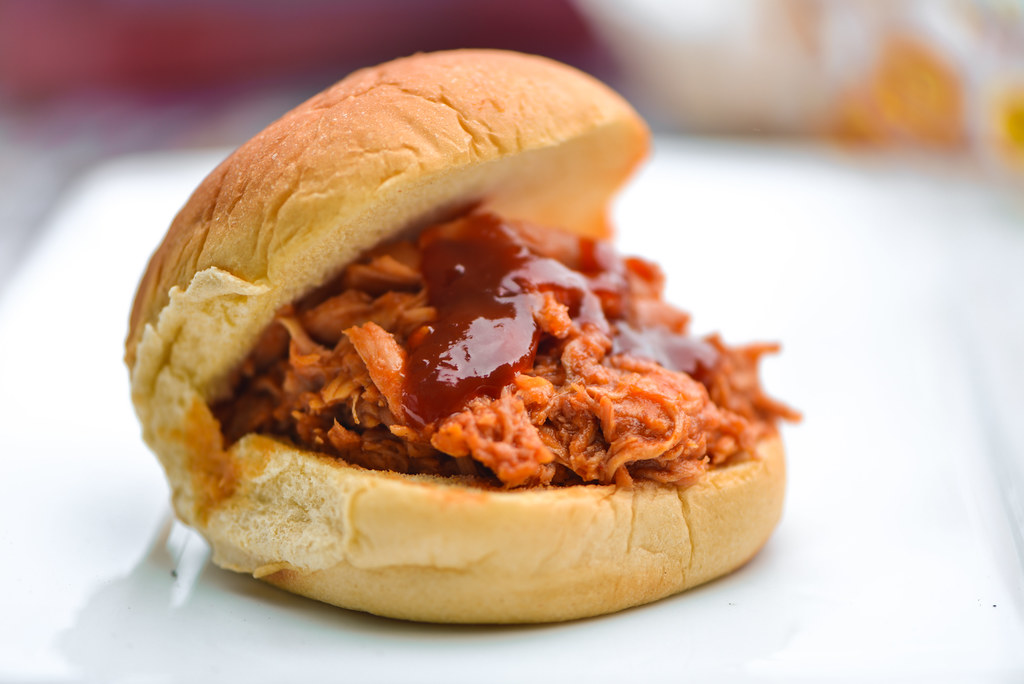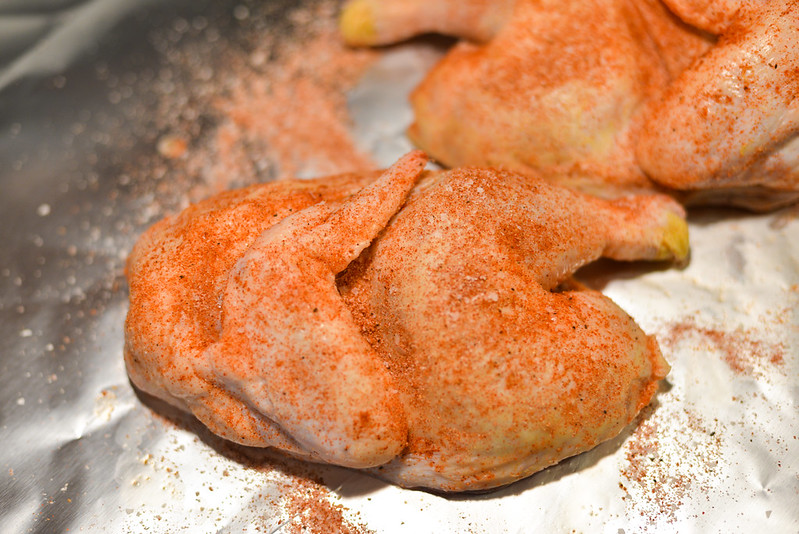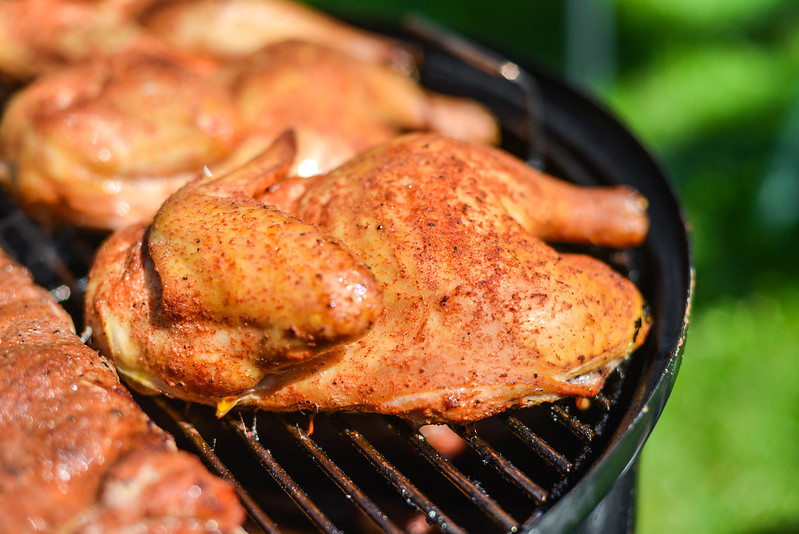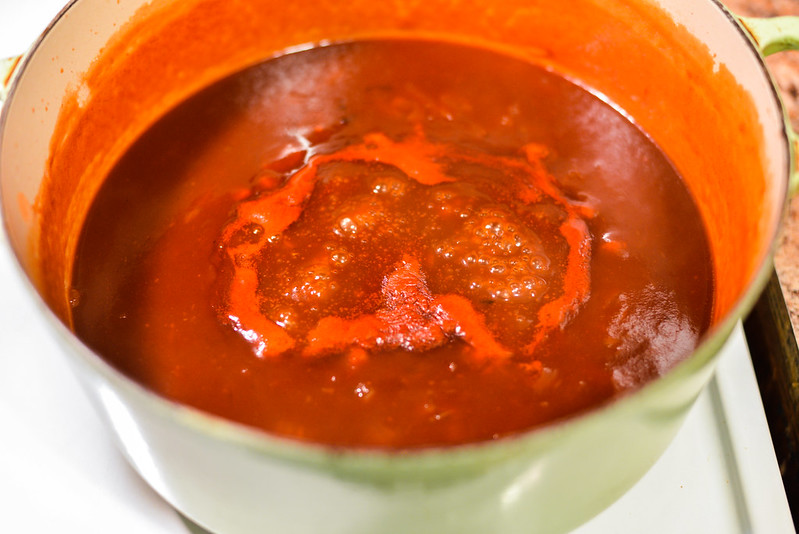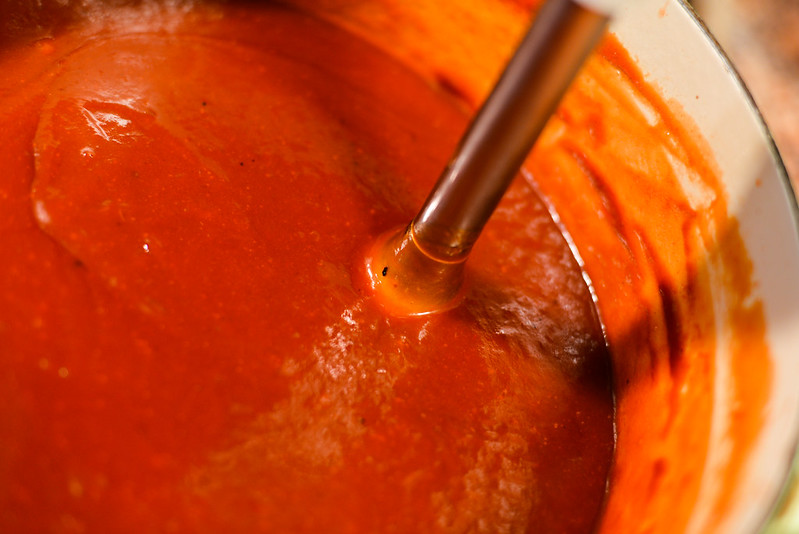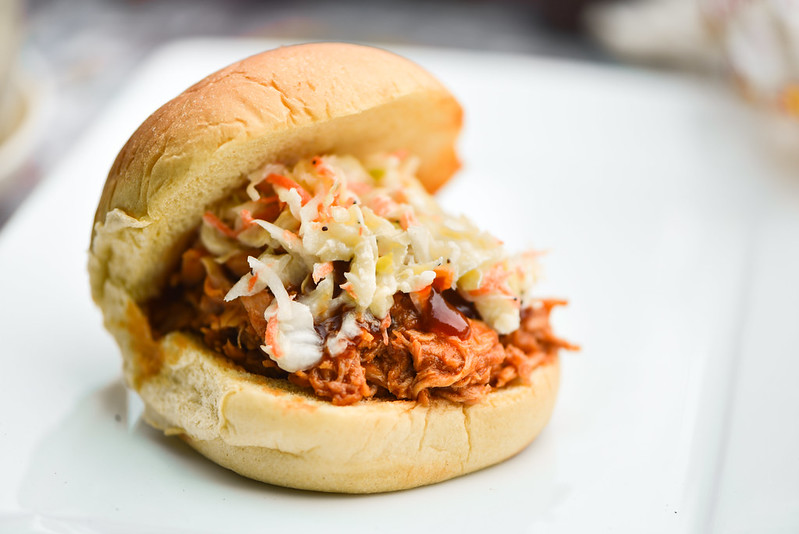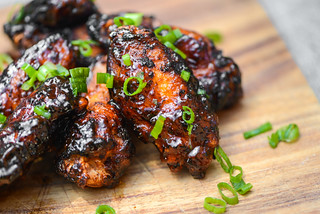Smoky Pulled Barbecue Chicken
Pulled pork is a wondrous thing. Made from pork shoulder, it's slowly smoked until the intramuscular fat and connective tissue renders and softens, leaving nothing but tender, juicy meat that can be shredded easily by hand. The process takes a good twelve to fourteen hours at a low temperature of 225°F, during which time the meat picks up a smoky flavor while developing an intensely flavored exterior bark. It's one of the classics of the barbecue cannon, which raises the question: Why does pulled barbecue chicken fail to reach a similar level of renown?
If my own experience is any indication, the answer is that pulled chicken, as tender and juicy as it can be, almost always lacks the right balance between meat, seasoning, and smoke. It tends to be so inundated with sauce that any trace of chicken flavor is completely drowned out. It's also often devoid of smokiness, unless the barbecue sauce contains liquid smoke (an ingredient I detest for its overpoweringly acrid flavor).
But just because most pulled chicken fails to reach the heights of pulled pork doesn't mean it shouldn't still taste great. I decided that it was time to figure out how to make really good pulled chicken. And with a little barbecue know-how, I was able to come up with a recipe that's outdone any pulled chicken I've ever encountered before.
What Pulled Chicken Won't Be
So much of what makes pulled pork great doesn't really translate to chicken. So from the outset, I had to drop some standard expectations and consider pulled chicken in a different light. First, chicken does not have the fat and connective tissue that requires slow rendering like pork shoulder. Even over low heat, the chicken will be done in a comparatively quick one or two hours.
For similar reasons, chicken is also more delicate and prone to drying out, which makes it important to leave the skin on—it provides a layer of protection that helps retain moisture. That meant I had to abandon any hope of the chicken developing bark, because the seasoned chicken skin would just be discarded later.
Here's where you should be focusing your efforts instead:
Maximum Moisture
A super juicy pulled chicken was something I knew I could pull off. I'm pretty hawkish about checking the internal temperature of my chicken to make sure it doesn't overcook, but even so, I almost always give it a good brine for some added moisture.
I've been a slow convert to dry-brining—applying a layer of salt to the meat rather than submerging it a salty liquid—but I saw a lot of advantages to that process here. For one, dry-brining not only enhances moisture, but also deepens the natural flavor of the chicken, rather than diluting it as in a liquid brine. Also, I could add some essential barbecue spices to my dry brine, almost like a rub, to begin to build up the flavor of the final product.
To start off, I picked up four whole birds—weighing in at around four pounds each—cut out the backbone, and then halved them. Preparing the chickens in this manner makes them easier to handle, season, and cook.
Then I applied the salt, which I had mixed with common barbecue spices like paprika, garlic powder, onion powder, and cayenne pepper. I didn't just coat the entire skin and cavity with the seasoning, but also put some under the skin to better season the meat as well.
I refrigerated the rubbed chicken overnight to let the dry-brine do its work.
Maximum Smokiness
If something's going to be labeled "barbecue," it should have a discernible smokiness. It can be tricky to get the right level of smokiness in chicken, though—the meat is so delicate that the smoke can easily overpower its natural flavor. That's why so many of my chicken recipes typically call for hot-and-fast smoking, instead of low-and-slow; chicken just doesn't need that much smoke.
But for pulled chicken, I wanted a slightly more intense smokiness to balance the barbecue sauce. I decided to do a side-by-side comparison, cooking one on the grill over indirect heat at around 375°F, and one in the smoker at 225°F. In both cases, I used only one fist-sized chunk of cherry wood, which imparts a milder smokiness than heartier woods like oak or hickory.
I cooked each batch until they reached 160°F in the thickest part of the breasts, and both were tender and juicy when done. But the low-and-slow chicken, which took just under two hours to cook, had a more pronounced smokiness and better moisture retention than the grill-roasted birds. The skin of the slow-smoked chicken was pale and flaccid—an undesirable trait I usually avoid by using higher heat—but that was of little concern here, since I was planning to discard it anyway.
The Right Sauce
The smoked chicken was fine in its own right, but between the mellow flavor of the meat and the absence of a crisp, flavorful bark, it didn't taste quite finished.
And that's where barbecue sauce saves the day (and, sadly, where so many pulled chicken recipes go oh-so-wrong).
It's easy to grab your favorite bottle of sauce and soak those glistening strands of meat in it, but not all sauces are right for the job. For one, a sauce too thick will just sit on top of the meat, drowning out any nuance in flavor and leaving you with a globby, gooey mess.
For optimal results, I decided to develop my own sauce; something that would hit the right sweet, tangy, fruity, and spicy notes a barbecue sauce should, but with a thinner consistency and dialed-back intensity. I settled on a mixture of sautéed onions and garlic that I simmered in a base of ketchup and apple juice, along with brown sugar, molasses, and honey for sweetness; cider vinegar for tang; and Worcestershire, soy sauce, mustard, and hot sauce for some salty-spicy depth.
The Best Pulled Chicken
The resulting chicken is surprisingly juicy, with an intoxicating smoky-sweet aroma. It was just thirsty enough to soak up the sauce, creating the exact balance I'd wanted: meaty, flavorful, and not too saucy.
I can't say it reaches the same greatness of pulled pork, but chicken is a different beast, and this meat is certainly at the top of the pulled chicken game.
Serve it on its own or—my personal favorite—in potato rolls, topped with a contrasting spoonful of cool and crunchy slaw.
You Might Also Like
Comments
-
Chad Thompson I make pulled chicken with the jumbo bag of leg quarters you can get for $0.59 per pound. It's cheaper than buying whole birds and I think the dark meat pulls better than the breast.
You sauce and slaw look great! -
Lisa Would this work with pork ribs in a slow cooker?
